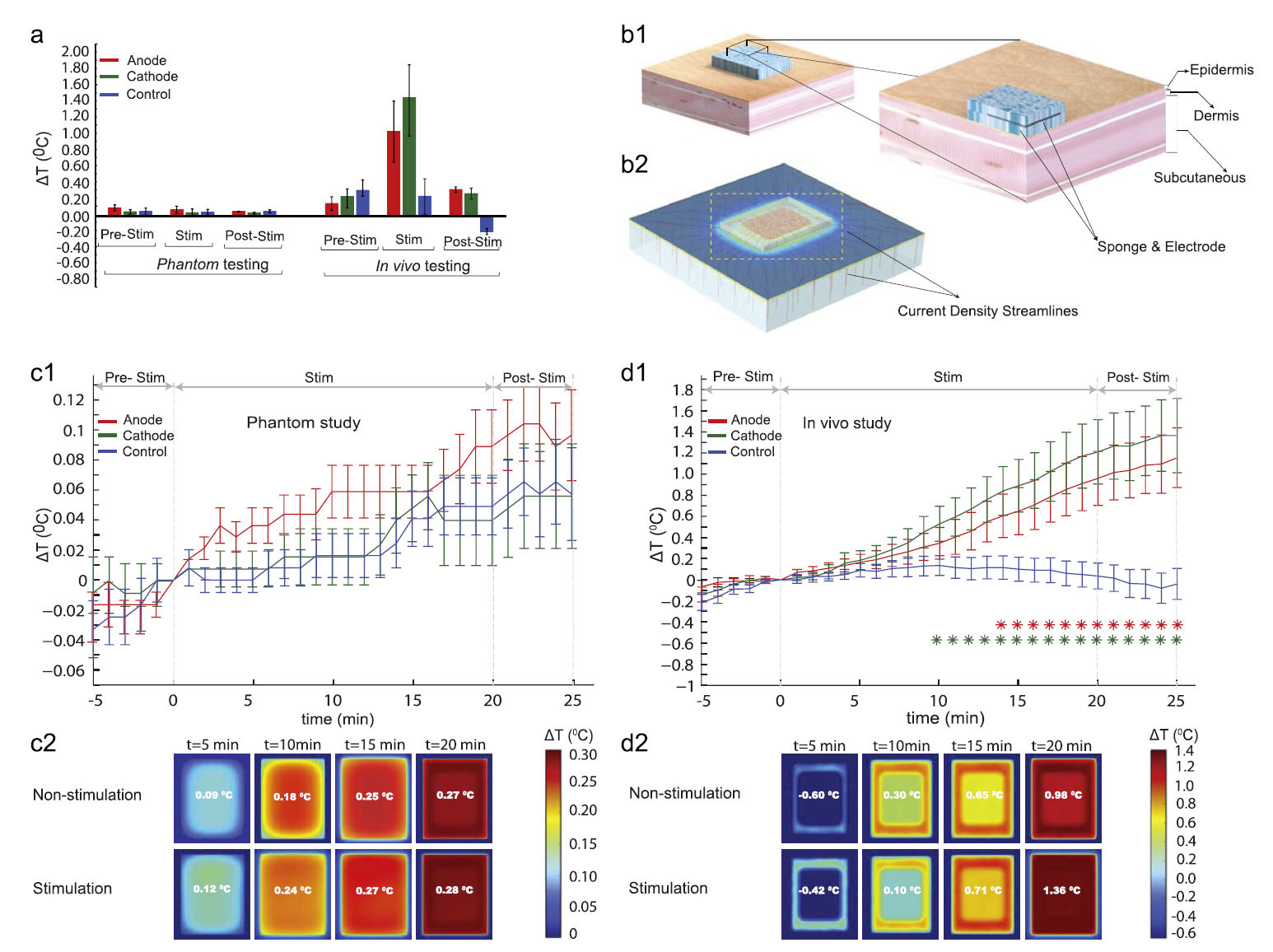New Paper: Minimal heating at the Skin surface during transcranial direct current stimulation (tDCS)
Khadka N, Zannou AL, Zunura F, Truong DQ, Dmochowski J, Bikson M
______________________________________
Download PDF Published in Neuromodulation DOI
Abstract
Objective: To assess if transcranial direct current stimulation (tDCS) produces a temperature change at the skin surface, if any change is stimulation polarity (anode or cathode) specific, and the contribution of passive heating (joule heat) or blood flow on such change.
Material and Methods: Temperature differences (ΔTs) in an agar phantom study and an in vivo study (forearm stimulation) including 20 volunteers with both experimental measures and finite element method (FEM) multiphysics prediction (current flow and bioheat) models of skin comprising three tissue layers (epidermis, dermis, and subcutaneous layer with blood perfusion) or of the phantom for active stimulation and control cases were compared. Temperature was measured during pre, post, and stimulation phases for both phantom and subject’s forearms using thermocouples.
Results: In the phantom, ΔT under both anode and cathode, compared to control, was not significantly different and less than 0.1°C. Stimulation of subjects resulted in a gradual increase in temperature under both anode and cathode electrodes, compared to control (at t = 20 min: ΔTanode = 0.9°C, ΔTcathode = 1.1°C, ΔTcontrol = 0.05°C). The FEM phantom model predicted comparable maximum ΔT of 0.27°C and 0.28°C (at t = 20 min) for the control and anode/cathode cases, respectively. The FEM skin model predicted a maximum ΔT at t = 20 min of 0.98°C for control and 1.36°C under anode/cathode electrodes.
Conclusions: Taken together, our results indicate a moderate and nonhazardous increase in temperature at the skin surface during 2 mA tDCS that is independent of polarity, and results from stimulation induced blood flow rather than joule heat.
